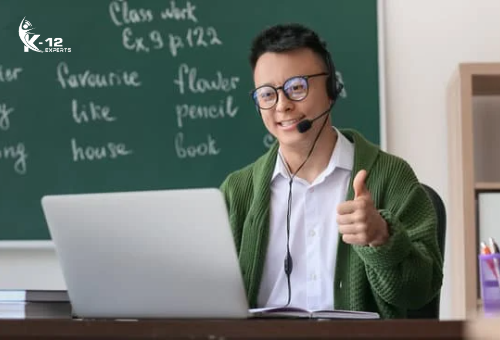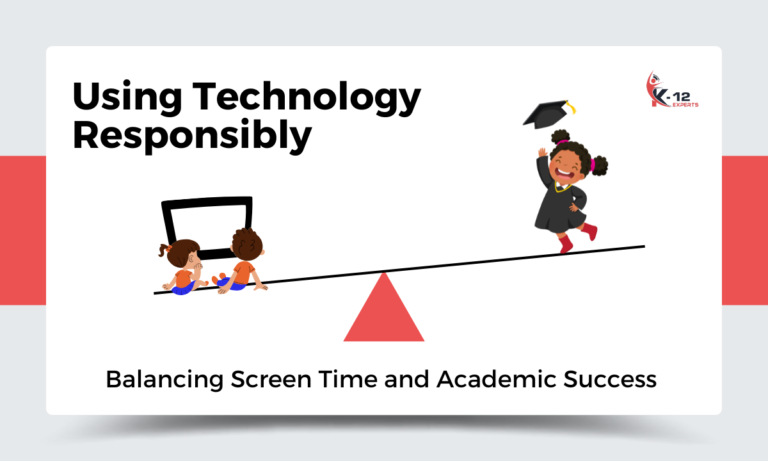In recent years, technological advancements have revolutionized various aspects of daily life, including how education is delivered and received. The emergence of virtual tutoring as a viable learning platform has garnered significant attention from educators, students, and parents alike.
As the world becomes increasingly interconnected through digital means, exploring the potential benefits and implications of integrating virtual tutoring into the educational landscape is crucial. Adapting virtual tutoring within educational systems offers numerous advantages, such as personalized lesson plans, instant feedback, and access to global educators.
Embracing Technological Advancements in Learning

Integrating technological advancements in learning environments has become essential for enhancing educational experiences and catering to diverse student needs.
By fostering digital literacy, educators can empower students with the skills necessary to navigate an increasingly interconnected world where technology plays a pivotal role in various aspects of life.
As we move further into the future, virtual tutoring is poised to play a significant role in education. With access to vast online resources and personalized guidance from experts worldwide, virtual tutoring offers unparalleled opportunities for personal growth and development. This learning mode also provides a safe environment wherein learners can explore new subjects or improve their understanding without fear of judgment or criticism.
Ultimately, embracing technological advancements such as virtual tutoring will improve educational outcomes by ensuring students receive tailored instruction suited to their unique strengths, weaknesses, interests, and aspirations.
Personalized Lesson Plans for Each Student

Incorporating personalized lesson plans for each student will revolutionize learning experiences by catering to individual needs, strengths, and interests.
This innovative approach in education, characterized by individualized progression and an adaptive curriculum, ensures that learners receive tailor-made instructions designed specifically for their unique learning styles. By harnessing the power of technology in virtual tutoring, educators can provide a student-centered approach to teaching that fosters a safe and nurturing environment for intellectual growth.
As a result, students are more likely to be engaged and motivated in their studies as they progress at their own pace with targeted support from online tutors. The advent of virtual tutoring platforms has paved the way for educators to create highly customized educational experiences that cater to each learner’s specific requirements while maintaining an engaging academic atmosphere.
These platforms employ sophisticated algorithms and data-driven techniques to analyze learners’ performance continuously, identifying areas where they excel or struggle. Consequently, this information adapts the curriculum accordingly, providing students with personalized guidance on demand.
The Convenience of Learning from Home

Embracing the convenience of learning from home offers numerous advantages for students, such as flexibility in scheduling, a comfortable environment, and reduced distractions, ultimately contributing to enhanced academic performance and personal growth.
Flexible scheduling allows learners to allocate time more efficiently by eliminating commute times and accommodating individual needs, such as work commitments or personal responsibilities.
As virtual tutoring reduces costs associated with transportation and physical materials, financial burdens on families are alleviated. Furthermore, increased accessibility means that education is no longer limited by geographic location or socioeconomic status; individuals worldwide can access high-quality educational resources at their fingertips.
Ultimately, the shift toward virtual tutoring signifies a transformative step forward in redefining traditional educational paradigms and unlocking new opportunities for future generations.
Connecting with Global Educators
Expanding one’s educational horizons through connecting with global educators offers unparalleled opportunities for students to access diverse perspectives, knowledge, and teaching methodologies. The increasing role of virtual tutoring enables global collaboration, empowering students and teachers to engage in cultural exchange and learn from each other’s experiences. By connecting with educators from different countries and backgrounds, students can develop a deeper understanding of various subjects while gaining valuable insights into the world around them.

The integration of technology in education has made it possible for students to connect with expert tutors across the globe, breaking down geographical barriers and fostering an inclusive learning environment.
The following table illustrates some key benefits of engaging with global educators:
| Benefit | Description | Example |
| Diverse Perspectives | Exposure to multiple viewpoints on a subject | Debating global issues |
| Innovative Teaching Methods | Learning new techniques tailored to individual needs | Project-based learning |
| Cultural Exchange | Understanding different cultures | Language immersion |
| Global Collaboration | Working together on projects or problems | International case studies |
Through virtual tutoring, learners are exposed to innovative teaching methods that cater to their unique needs, further enhancing their academic growth. As our world becomes increasingly interconnected, students must embrace cultural diversity and learn to collaborate effectively within a global context. By engaging with international educators via virtual tutoring platforms, learners can build a strong foundation for success in today’s complex society while ensuring a safe learning environment at home.
Enhancing Academic Performance through Instant Feedback

Optimizing academic performance can be achieved through instant feedback, allowing students to quickly identify areas for improvement and make necessary adjustments in real time.
This method is particularly effective when combined with individualized attention, adaptive learning tools, and collaborative virtual classrooms. Such a multi-faceted approach provides several benefits:
As technology continues to advance, educational institutions must embrace these innovations and integrate them into their curricula. By providing individualized attention through adaptive learning tools, creating opportunities for collaboration in virtual classrooms, and offering instant feedback on student performance, educators can effectively enhance academic outcomes while simultaneously addressing the subconscious desire for safety among their audience.
The Impact on Traditional Classroom Education

Integrating instant feedback and adaptive learning tools in traditional classroom education has led to a transformative shift in teaching methodologies, fostering enhanced student engagement and improved academic outcomes.
This classroom evolution stems from incorporating virtual tutoring technologies, which allow teachers to quickly identify areas where students may be struggling and provide timely support. As these tools become more sophisticated, they can revolutionize how educators approach their craft, compelling them to adapt their methods to keep pace with technological advancements.
Teacher adaptability is crucial for making the most of these innovations, as new strategies must be adopted to facilitate increased student engagement. In this context, it becomes essential for educators to develop a deeper understanding of how virtual tutoring can complement existing teaching practices. Furthermore, by embracing technology-driven pedagogy, teachers are better equipped to prepare students for the challenges in an increasingly digital world.
| Pros | Cons |
| Enhanced student engagement | Potential over-reliance on technology |
| Improved academic outcomes | Risk of diminished interpersonal skills development |
| More efficient use of class time | It may require substantial investment in resources |
| Greater access to personalized learning | Uneven implementation across socioeconomic contexts |
| Better preparation for digital-age careers | Ethical concerns regarding data privacy and security |
By considering both the benefits and potential drawbacks of incorporating virtual tutoring into traditional classrooms, educators can make informed decisions about how best to integrate these technologies into their teaching practices. Ultimately, striking a balance between leveraging cutting-edge tools while preserving essential human elements will ensure that future generations receive a progressive education grounded in timeless principles.
Preparing for a Digital Learning Landscape

As we navigate the rapidly evolving digital learning landscape, educators and institutions must develop strategies that effectively integrate technology while maintaining a strong focus on fostering critical thinking, creativity, and interpersonal skills in students.
Addressing the digital divide challenges is crucial in ensuring equitable access to education for all students, regardless of their socioeconomic background or geographical location. This includes providing affordable devices, internet connectivity, and training resources to both teachers and students who may not have had prior exposure to virtual tutoring. Additionally, online etiquette’s importance should be emphasized to promote a respectful and inclusive learning environment where students feel comfortable expressing their thoughts without fear of discrimination or judgment.
To cater to diverse learning styles in a digital landscape, educational institutions must invest in adaptive learning technologies that can offer personalized content based on individual needs and preferences. This approach considers multiple intelligences and cultural backgrounds while designing curricula that engage learners through interactive multimedia content such as gamification, simulations, animations, videos, etc.
Conclusion
In conclusion, virtual tutoring presents a transformative potential in the realm of education, offering personalized and convenient learning experiences for students worldwide. By connecting with global educators and providing instant feedback, this innovative approach is poised to enhance academic performance while shaping a digital learning landscape.
Frequently Asked Questions
How can virtual tutoring ensure the same level of academic rigor and quality as traditional in-person tutoring sessions?
Virtual tutoring can maintain academic integrity and quality through personalized learning approaches, fostering virtual engagement, utilizing advanced technology, and implementing rigorous assessment methods for continuous improvement in educational outcomes.
What measures are in place to ensure the safety and security of students participating in virtual tutoring, in terms of data privacy and online interactions?
Measures ensuring student safety in virtual tutoring encompass data protection policies, stringent identity verification processes, and continuous monitoring of interactions to prevent potential risks and maintain a secure environment.
How can virtual tutoring platforms accommodate students with disabilities or special needs, ensuring equal access to educational resources and opportunities?
Inclusive design strategies, adaptive learning tools, and personalized lesson plans are essential for accommodating students with disabilities or special needs, ensuring equal access to educational resources and opportunities.
What is the potential impact of virtual tutoring on the development of students’ social skills, given the reduced face-to-face interaction with peers and instructors?
Potential impact on empathy and collaboration challenges may arise from virtual tutoring, as reduced face-to-face interaction hinders the development of social skills. Virtual socialization strategies can mitigate these effects, fostering a safe learning environment.
How can virtual tutoring platforms effectively address potential issues of the digital divide and unequal access to technology and internet connectivity among students from different socioeconomic backgrounds?
Digital equity challenges necessitate innovative learning methods and virtual engagement strategies to ensure equal access for students from diverse socioeconomic backgrounds, fostering a sense of inclusivity and technological empowerment.




